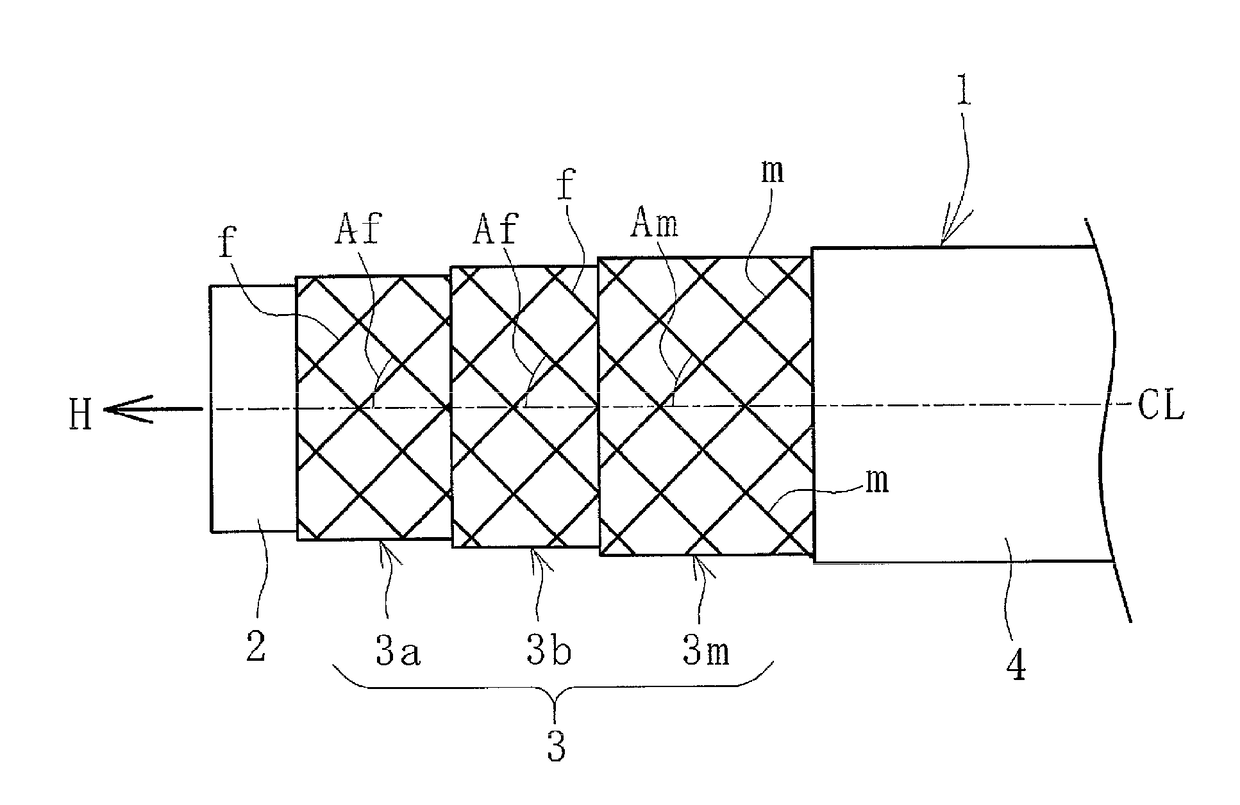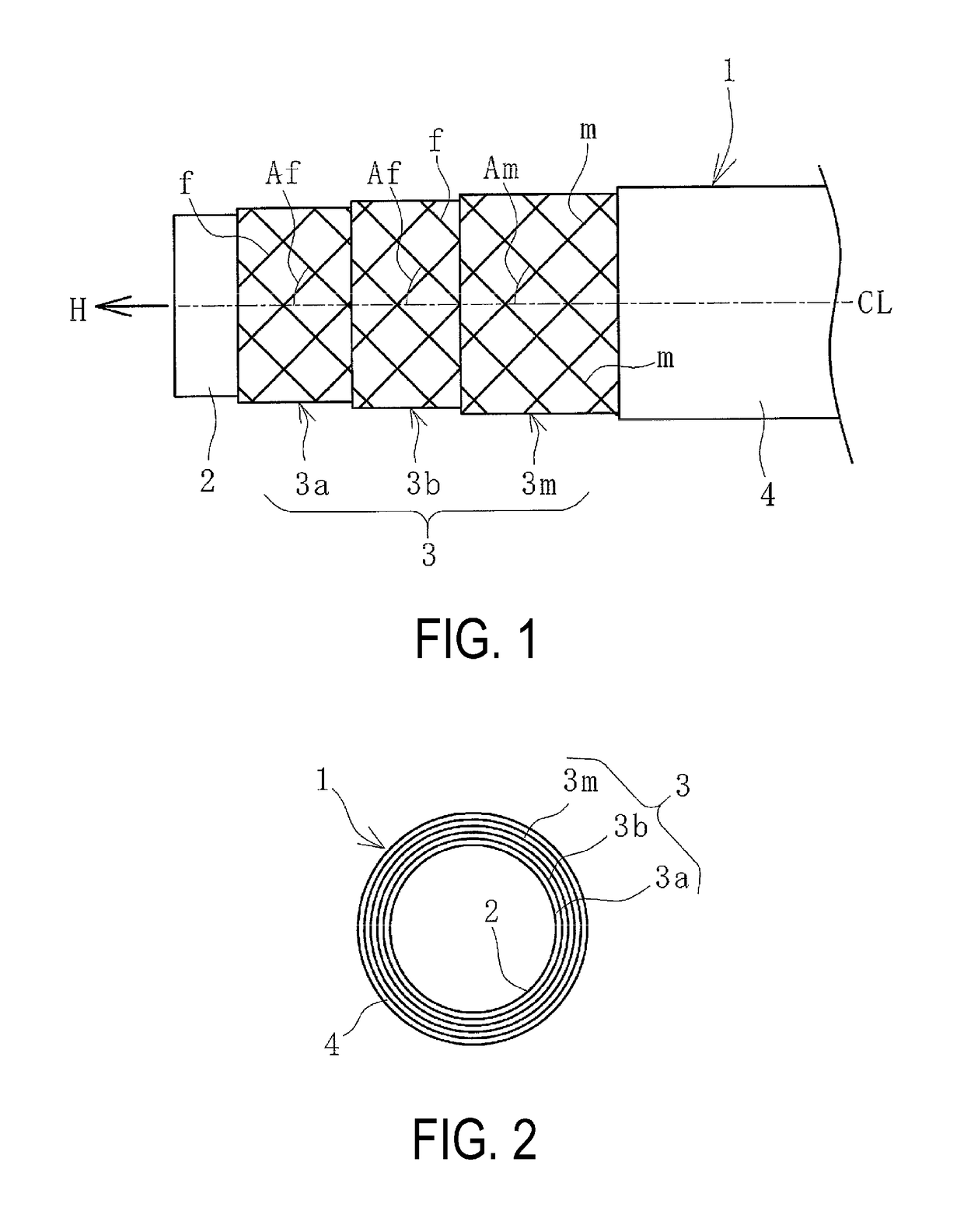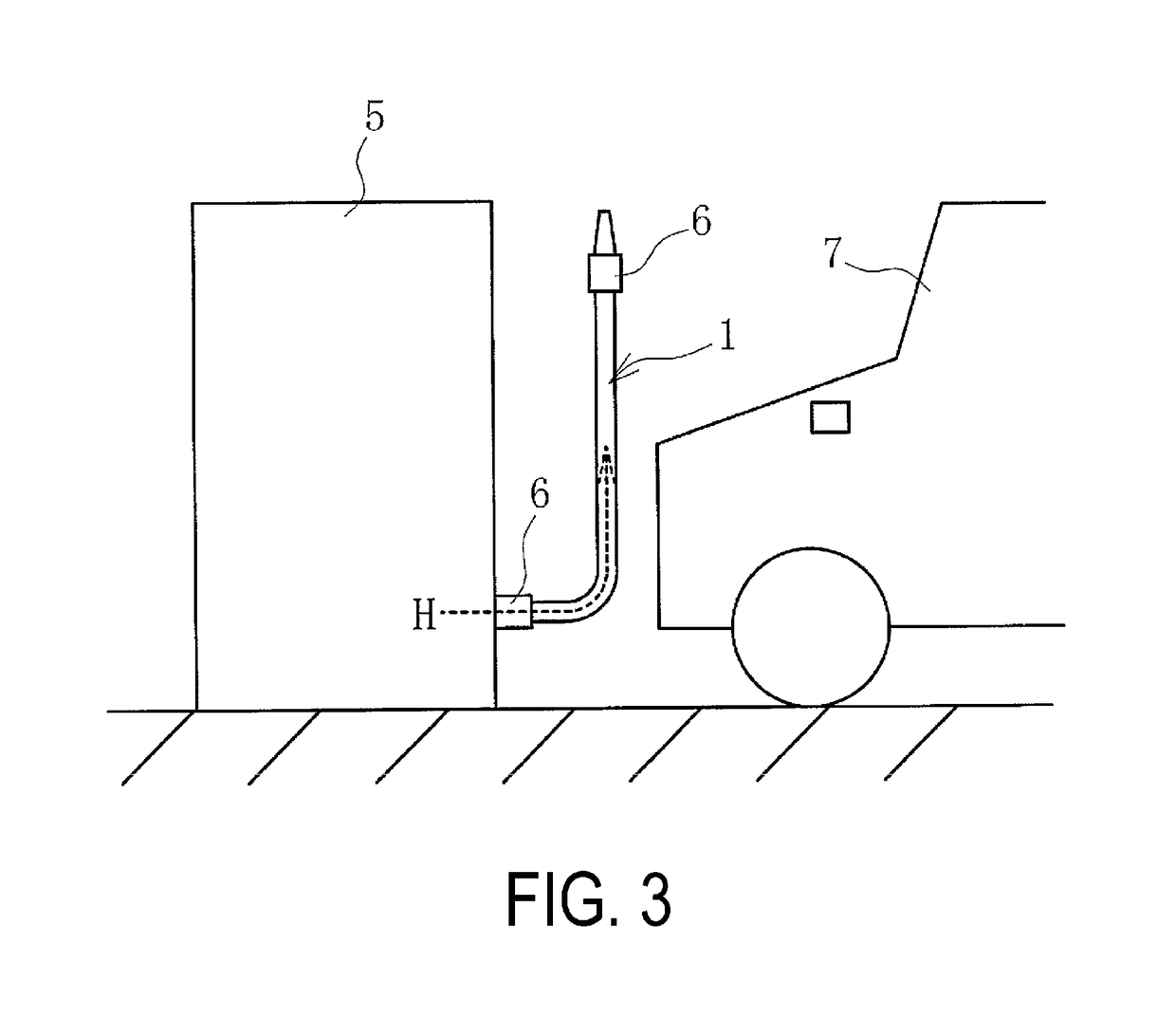Hydrogen-Dispensing Hose
a technology of hydrogen-dispensing hoses and hoses, which is applied in the direction of synthetic resin layered products, other domestic articles, braided products, etc., can solve the problems of reducing the life of the hose, affecting the dimensional change of the braided structure of the reinforcing layer, and metal being made brittle, so as to suppress the disruption and internal pressure-induced dimensional changes, improve the pressure resistance and durability
- Summary
- Abstract
- Description
- Claims
- Application Information
AI Technical Summary
Benefits of technology
Problems solved by technology
Method used
Image
Examples
examples
[0052]Four analytical models (Examples 1-3, Comparative Example) of structures similar to that of the hose illustrated in FIG. 1 were prepared, with only the specifications of the reinforcing layers different as shown in Table 1, and analyzed and evaluated for disruption of the reinforcing layers and diameter increase (dimensional change) in the inner surface layers. The first layer in Table 1 is the innermost layer, the second layer is a layer layered on the outer circumferential surface of the first layer, and the third layer is the outermost layer. The dry hydrogen gas permeability coefficient of the inner surface layer at 90° C. is 1×10−8 cc·cm / cm2·sec.·cmHg or less. Test samples of the four models were prepared, and hose fittings having identical specifications were crimped and attached to hose ends using identical levels of crimping force to create hose assemblies, which were evaluated for pressure resistance. In the pressure resistance test, failure pressure was measured acco...
PUM
| Property | Measurement | Unit |
|---|---|---|
| Temperature | aaaaa | aaaaa |
| Fraction | aaaaa | aaaaa |
| Angle | aaaaa | aaaaa |
Abstract
Description
Claims
Application Information
 Login to View More
Login to View More - R&D
- Intellectual Property
- Life Sciences
- Materials
- Tech Scout
- Unparalleled Data Quality
- Higher Quality Content
- 60% Fewer Hallucinations
Browse by: Latest US Patents, China's latest patents, Technical Efficacy Thesaurus, Application Domain, Technology Topic, Popular Technical Reports.
© 2025 PatSnap. All rights reserved.Legal|Privacy policy|Modern Slavery Act Transparency Statement|Sitemap|About US| Contact US: help@patsnap.com



